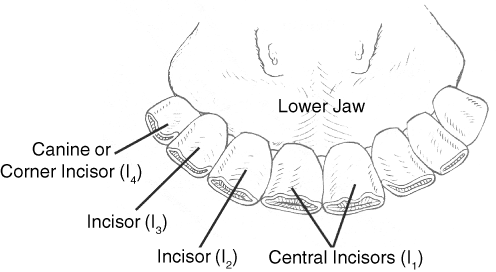
Introduction: Cattle have a total of 32 teeth. They do not have any upper incisors. The dental formula for cattle is as follows: 0/4 incisors, 3/3 pre-molars, 3/3 molars. The first number in each formula represents how many sets of teeth are on the upper jaw; the second number indicates how many sets of teeth are on the lower jaw. For example, the 0/4 means that cattle have no upper incisors, but have 4 sets of lower incisors (8 lower incisors in all). Most of the time the dental formula looks like this 2 (0/4 incisors, 3/3 pre-molars, 3/3 molars) = 32.
All baby calves are born with deciduous teeth (teeth that will fall out). Deciduous teeth are much smaller than permanent teeth. The deciduous teeth are replaced with permanent teeth as the animal ages. The following table outlines when the permanent teeth will appear or erupt:
| Permanent Tooth Eruption in Cattle | |||
| Permanent Tooth | Age at Eruption | In Wear | Level and Neck Emerged from Gum |
| Incisor (I1) | 1.5-2 years | All at 5 years | 6 years |
| Incisor (I2) | 2-2.5 years | 7 years | |
| Incisor (I3) | 3 years | 8 years | |
| Incisor (I4) | 3.5-4 years | 9 years | |

| This is a diagram of the incisors associated with the lower jaw. These incisors are the teeth that can easily be used to age an animal. In this diagram, all the incisors are permanent teeth. |
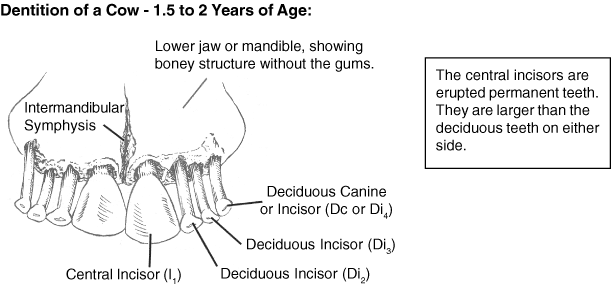
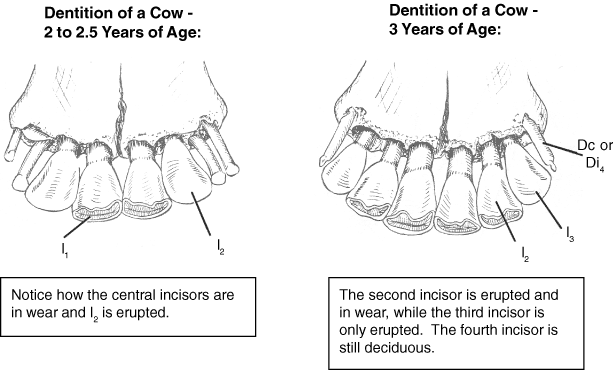


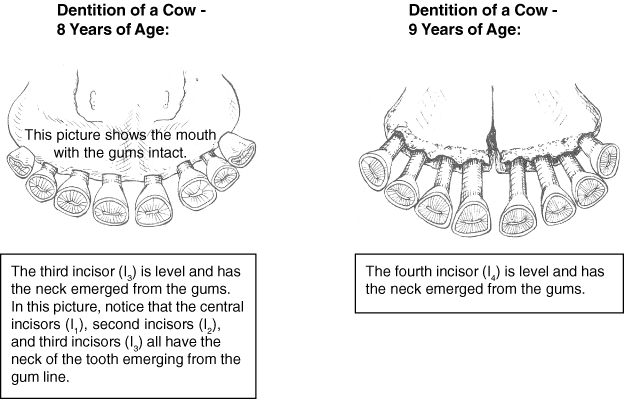
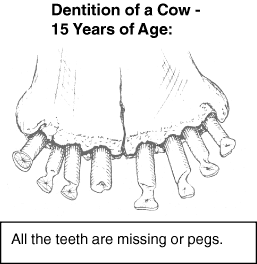
Copyrighted graphics used by permission from Anatomy of Domestic Animals, Sudz Publishing (email:sudzpub@mac.com)